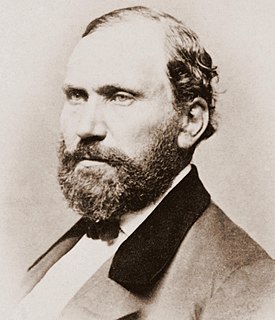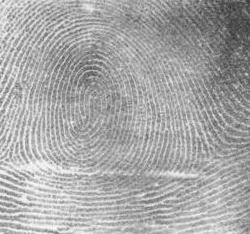
DNA profiling is the process of determining an individual's DNA characteristics, which are as unique as fingerprints. DNA analysis intended to identify a species, rather than an individual, is called DNA barcoding.
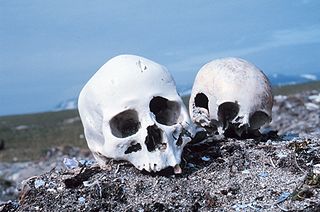
Forensic science is the application of science to criminal and civil laws, mainly—on the criminal side—during criminal investigation, as governed by the legal standards of admissible evidence and criminal procedure.

Forensic dentistry or forensic odontology is the application of dental knowledge to those criminal and civil laws that are enforced by police agencies in a criminal justice system. Forensic dentists are involved in assisting investigative agencies to identify recovered human remains in addition to the identification of whole or fragmented bodies; forensic dentists may also be asked to assist in determining age, race, occupation, previous dental history and socioeconomic status of unidentified human beings.
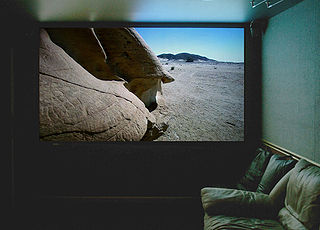
A video projector is an image projector that receives a video signal and projects the corresponding image on a projection screen using a lens system. All video projectors use a very bright light or laser to project the image, and most modern ones can correct any curves, blurriness, and other inconsistencies through manual settings.

Computer forensics is a branch of digital forensic science pertaining to evidence found in computers and digital storage media. The goal of computer forensics is to examine digital media in a forensically sound manner with the aim of identifying, preserving, recovering, analyzing and presenting facts and opinions about the digital information.

Lite-Brite is a toy that was originally marketed in 1967. It consists of a light box with small colored plastic pegs that fit into a panel and illuminate to create a lit picture, by either using one of the included templates or creating a "freeform" image on a blank sheet of black paper. There are eight peg colors: red, blue, orange, white (clear/colorless), green, yellow, pink, and violet (purple).

The CSI effect, also known as the CSI syndrome and the CSI infection, is any of several ways in which the exaggerated portrayal of forensic science on crime television shows such as CSI: Crime Scene Investigation influences public perception. The term was first reported in a 2004 USA Today article describing the effect being made on trial jurors by television programs featuring forensic science. It most often refers to the belief that jurors have come to demand more forensic evidence in criminal trials, thereby raising the effective standard of proof for prosecutors. While this belief is widely held among American legal professionals, some studies have suggested that crime shows are unlikely to cause such an effect, although frequent CSI viewers may place a lower value on circumstantial evidence. As technology improves and becomes more prevalent throughout society, people may also develop higher expectations for the capabilities of forensic technology.

Digital forensics is a branch of forensic science encompassing the recovery and investigation of material found in digital devices, often in relation to computer crime. The term digital forensics was originally used as a synonym for computer forensics but has expanded to cover investigation of all devices capable of storing digital data. With roots in the personal computing revolution of the late 1970s and early 1980s, the discipline evolved in a haphazard manner during the 1990s, and it was not until the early 21st century that national policies emerged.
Crime reconstruction or crime scene reconstruction is the forensic science discipline in which one gains "explicit knowledge of the series of events that surround the commission of a crime using deductive and inductive reasoning, physical evidence, scientific methods, and their interrelationships". Gardner and Bevel explain that crime scene reconstruction "involves evaluating the context of a scene and the physical evidence found there in an effort to identify what occurred and in what order it occurred." Chisum and Turvey explain that "[h]olistic crime reconstruction is the development of actions and circumstances based on the system of evidence discovered and examined in relation to a particular crime. In this philosophy, all elements of evidence that come to light in a given case are treated as interdependent; the significance of each piece, each action, and each event falls and rises on the backs of the others."

Forensic biology is the application of biology to associate a person(s), whether suspect or victim, to a location, an item, another person. It can be utilized to further investigations for both criminal and civil cases. Two of the most important factors to be constantly considered throughout the collection, processing, and analysis of evidence, are the maintenance of chain of custody as well as contamination prevention, especially considering the nature of the majority of biological evidence. Forensic biology is incorporated into and is a significant aspect of numerous forensic disciplines, some of which include forensic anthropology, forensic entomology, forensic odontology, forensic pathology, forensic toxicology. When the phrase "forensic biology" is utilized, it is often regarded as synonymous with DNA analysis of biological evidence.

Forensic photography, also referred to as crime scene photography, is an activity that records the initial appearance of the crime scene and physical evidence, in order to provide a permanent record for the courts. Crime scene photography differs from other variations of photography because crime scene photographers usually have a very specific purpose for capturing each image.
The following outline is provided as an overview of and topical guide to forensic science:

Forensic footwear evidence can be used in legal proceedings to help prove that a shoe was at a crime scene. Footwear evidence is often the most abundant form of evidence at a crime scene and in some cases can prove to be as specific as a fingerprint. Initially investigators will look to identify the make and model of the shoe or trainer which made an impression. This can be done visually or by comparison with evidence in a database; both methods focus heavily on pattern recognition and brand or logo marks. Information about the footwear can be gained from the analysis of wear patterns which are dependent on angle of footfall and weight distribution. Detailed examination of footwear impressions can help to link a specific piece of footwear to a footwear imprint as each shoe will have unique characteristics.
The Polilight is a portable, high-intensity, filtered light source used by forensic scientists and others to detect fingerprints, bodily fluids and other evidence from crime scenes and other places.
The National Clearinghouse for Science, Technology and the Law at Stetson University College of Law is an organization that provides information sharing and professional development to forensic scientists, lawyers, judges, other legal professionals, law enforcement personnel, educators, and the general public. Sponsored by a grant from the National Institute of Justice, NCSTL offers educational programs and a database of forensic-related information. Within the context of the promotion of justice based on sound science and technology, NCSTL focuses on raising awareness and fostering communication and understanding among the various parties interested in scientific evidence and expert testimony.

Forensic profiling is the study of trace evidence in order to develop information which can be used by police authorities. This information can be used to identify suspects and convict them in a court of law.
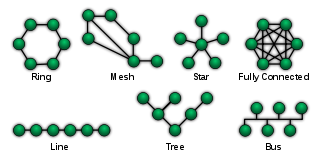
Network forensics is a sub-branch of digital forensics relating to the monitoring and analysis of computer network traffic for the purposes of information gathering, legal evidence, or intrusion detection. Unlike other areas of digital forensics, network investigations deal with volatile and dynamic information. Network traffic is transmitted and then lost, so network forensics is often a pro-active investigation.

Mobile device forensics is a branch of digital forensics relating to recovery of digital evidence or data from a mobile device under forensically sound conditions. The phrase mobile device usually refers to mobile phones; however, it can also relate to any digital device that has both internal memory and communication ability, including PDA devices, GPS devices and tablet computers.
The Scientific Working Group on Imaging Technology was convened by the Federal Bureau of Investigation in 1997 to provide guidance to law enforcement agencies and others in the criminal justice system regarding the best practices for photography, videography, and video and image analysis. This group was terminated in 2015.

A USB microscope is a low-powered digital microscope which connects to a computer, normally via a USB port. They are widely available at low cost for use at home or in commerce. Their cost varies in the range of tens to thousands of dollars. In essence, USB microscopes are a webcam with a high-powered macro lens and generally do not use transmitted light, but rely on incident light from in-built LEDs lights situated next to the lens. The light reflected from the sample then enters the camera lens. However, the camera is usually sensitive enough not to need additional lighting. As the camera attaches directly to the USB port of a computer, eyepieces are not required and the images are shown directly on the monitor.
